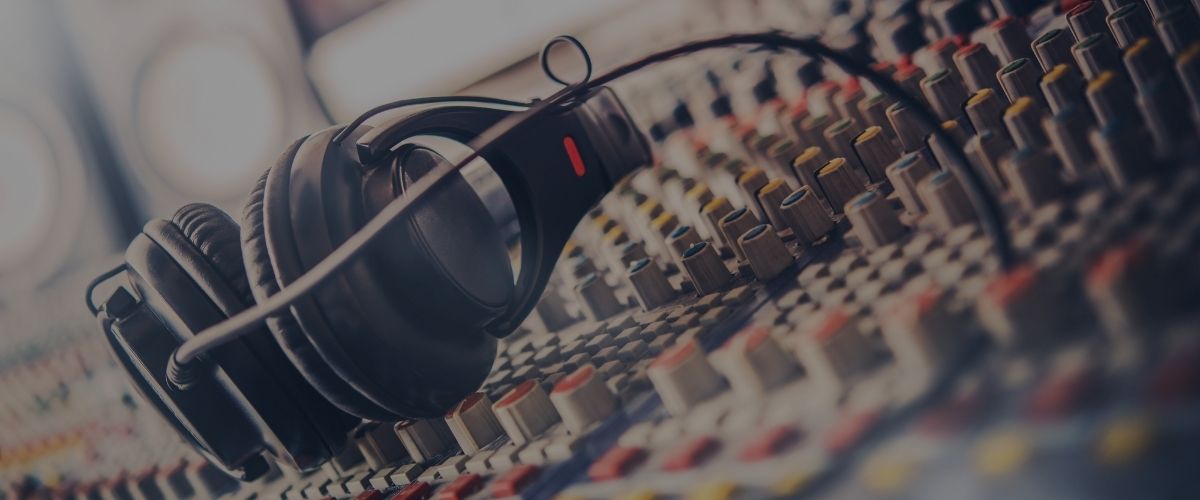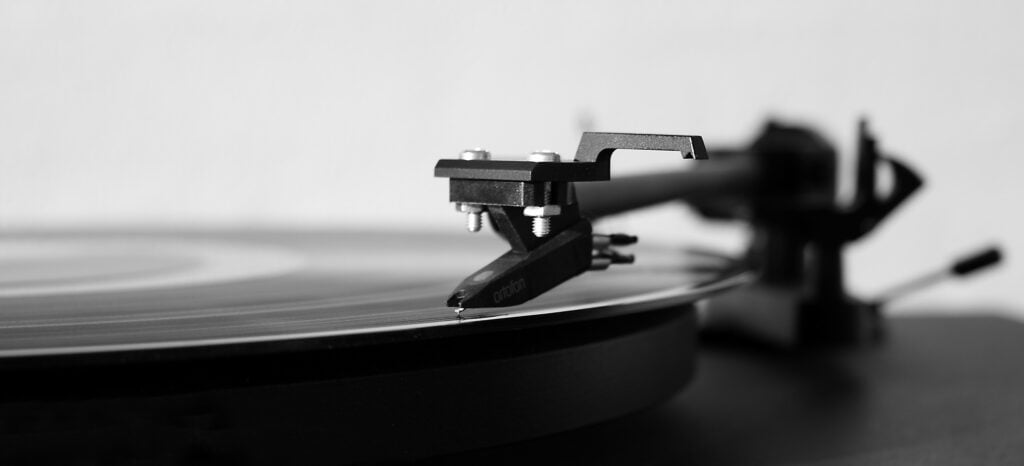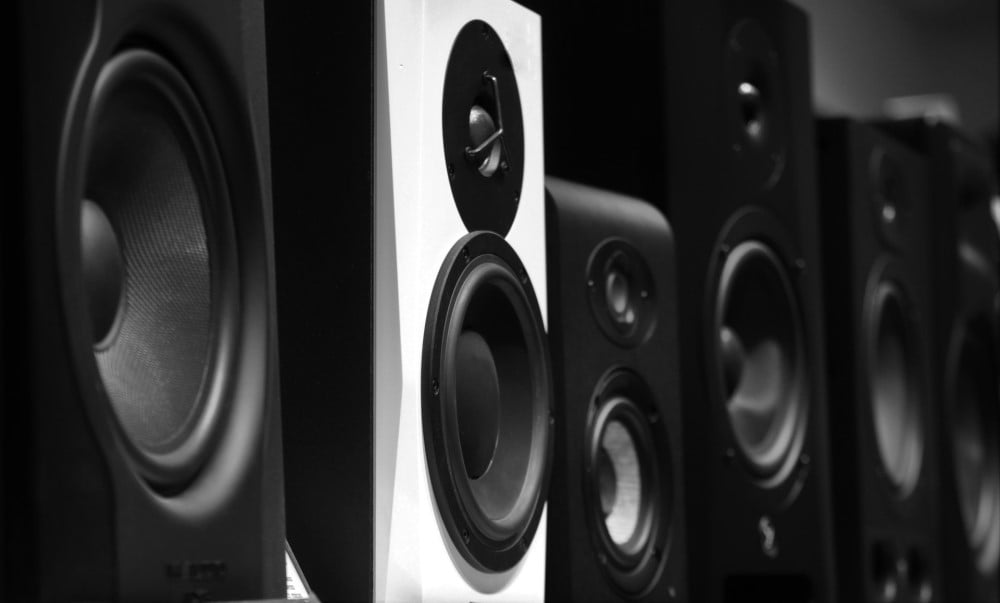
What Factors Affect Sound Quality?
A common question we see is “what factors affect sound quality?”. Various electrical and physical elements have an impact on an audio device’s ability to produce high-quality sound, whether it be a portable Bluetooth speaker, a sizable PA system, a set of reference monitors, or even earbuds or headphones.
According to psychoacoustics, sound quality is somewhat arbitrary because what sounds good to one person may sound very shocking to another. This article will look at the factors that affect the sound quality (differentiating between weakly represented audio and powerful, clear sound) as well as the characteristics of the sounds you hear through your speakers, headphones, or earbuds.
We’ll be tracking the signal route of the source material from the beginning of the file/recording to the point it reaches our ears in order to assess the caliber of the sound you hear:
1. The Source Material
The first factor that influences the sound quality you hear is, of course, solely reliant on the caliber of the content you are supplying to the system. The evaluation of the file format and its impact on audio quality is the first step in this process. Digital audio files can be characterized into three types:
- Uncompressed Audio Formats
- Lossy Compressed Audio Formats
- Lossless Compressed Audio Formats
Uncompressed Audio Formats
Uncompressed audio formats, as their name implies, accurately capture the recorded content that has not been compressed. These file types take up a lot of space on your device even though they are fundamentally the finest for important listening. PCM (Pulse Code Modulation), WAV, and AIFF are a few examples of these files. These file formats are essentially the “best sounding” file types because they are uncompressed.
Lossy Compressed Audio Formats
Some compression techniques that reduce audio quality for disk space when audio files are compressed to save storage space are known as lossy compressed formats, with MP3 files being the most widely used example. Different MP3 files have different file sizes, which has a big impact on audio quality. Additionally, different audio file quality levels are available through streaming providers.
The size of an MP3 file is expressed in kilobits transmitted per second; for optimal sound quality, you should aim for a bitrate of at least 1.411 kbps (CD quality), though 320 kbps will do.
Lossless Compressed Audio Formats
The opposite of lossy compression, lossless compression reduces file size while maintaining the integrity of the contents. This indicates that these file types generally meet the performance requirements of uncompressed audio formats while taking up less disk space. FLAC, WMA, and ALAC are typical examples of lossless audio compression formats. If you’re not sure which audio format will best meet your requirements, consider it this way:
- Uncompressed formats are strongly advised if you’re recording, processing, or analyzing audio content.
- Choose lossless compressed formats if you’re listening to music, want a true depiction of the file’s content, and have extra storage space.
- Lossy compressed formats would work best for you if you don’t care too much and have a larger digital collection.

What about Analog Listening?
Although it’s wonderful to see vinyl listening making a revival, many are falling prey to a number of illusions, the most common of which is that it’ll make everything sound ‘better’ You’ll need to start with a high-performing speaker system to properly appreciate the art because it goes without saying that a vinyl record played via inexpensive speakers won’t sound much better than an MP3 file played on the same speakers.
Yes, listening to records on analog media makes perfect sense if they were created using analog equipment (i.e., recorded and printed to tape). It’s just a print of digital data, so listening to the most recent pop or hip-hop record that was totally made in the box won’t sound any better on a sophisticated vinyl setup, so I guess it’s more of an expensive gimmick.
The design and type of your stylus will also have an impact on what you hear if you listen to vinyl. Because the grooves on a record are so few, you’ll find that more accurate needles are better at identifying these grooves, which will make your music feel more “genuine.” Additionally, improper needle technique might harm the stylus’s tip, producing static-like sounds when the recording is played back.
It’s also crucial to remember at this point that low-quality systems or file formats won’t improve the sound of poorly created material.
2. Digital To Analog Conversion
The binary information must first be converted into electrical energy, which electronic audio equipment can interpret before the musical content can be heard by amplifiers, speakers, and your ears. One of these converters, known as a DAC (Digital to Analog Converter), is found in every music-playing device. The caliber of the DAC on your device is a key factor in determining overall sound quality. To get the most out of their listening experience, many audiophiles invest in and use dedicated DACs with their PCs, televisions, and cellphones.
The integrated DAC on your device is typically adequate, but if you want to improve music quality, even more, it’s definitely something to consider. DACs can be found in portable configurations like the AudioQuest DragonFly or in others made for more long-term installations like the iFi Zen DAC V2.

3. Cabling And Connectors
Your source material is now being transferred between analog or digital audio devices as an electrical signal, and the cabling and connectors used can affect the sound you hear. You shouldn’t need to worry too much about this if you’re running signal over short distances. Higher-quality cables and connections, on the other hand, will last longer than the default cables and will undoubtedly cut down on the amount of unwelcome noise you might experience. My favorite brands, which I highly advise if you’re seeking to upgrade your wiring, are Neutrik, Amphenol, and Kirlin.
4. Bluetooth Codec
Other elements, most notably the Bluetooth codec in use, might affect sound quality when streaming audio over Bluetooth or any other wireless technology. Different codecs perform better in certain contexts, and Bluetooth has undergone numerous upgrades throughout the years. For now, it goes without saying that a newer, quicker, and higher-quality codec should be utilized if you’re expecting high-fidelity music. We have a guide on Bluetooth codecs for you to check out. Which Bluetooth codecs are the best? I prefer the CD-quality audio provided by AptX Lossless/Adaptive codecs, while LDAC is also a fantastic choice if you’re using an Android device.
5. Speaker Build Quality & Components
Since the speakers themselves are essentially the most important component of this entire process, we must examine them in the final step of our sound chain. No matter how much you spend on DACs, cables, and external drives to hold your uncompressed music collection, a wonderful set of speakers will still sound terrible when low-quality file formats are employed, and a low-quality pair of speakers will only take you so far.
We can now examine how this speaker would sound based on its physical characteristics, assuming you’re working with a well-built speaker system consisting of high-quality components:
The Speaker Drivers
A crucial step in the process is the vibration of the drivers, which transmit the sound into the system. Different materials, each with unique acoustic properties, can be used to create speaker drivers. For instance, tweeters made of light metals seem to reproduce higher frequencies better because, unlike cones made of paper or plastic, they can vibrate quickly while maintaining their rigidity.
Aside from the speaker’s build quality, the driver arrangement has a significant impact on how well it performs for your particular needs.
Even the simple structure of the driver coil can have an impact on the overall sound quality heard. The relationship between speaker driver design and sound quality is a topic unto itself.
You might think a small 8-inch speaker doesn’t sound “nice” if you want to play bass-heavy music via your system, but it’s just not made to reproduce really low frequencies.
The Speaker Cabinet
The speaker’s sound is also significantly influenced by the material of the enclosure because some materials work better with moving airwaves than others. The majority of speaker cabinets are constructed from various types of woods and polymers, each with unique acoustic characteristics.
An audiophile’s worst enemy, ugly resonances can be produced by plastic speaker enclosures, despite the fact that they are lighter, more affordable, and more easily molded into precise forms and designs.
Although less expensive timbers are typically utilized, it’s not too hard to acquire some pretty exotic enclosures, however, they could end up being pricey and heavy.
Finally, in order to maximize the performance of your sound system, speaker placement is also crucial. You can look at our speaker placement guide for more detailed information because this can get pretty complicated. It’s also a good idea to check out our other article on how volume can impact a speaker’s sound quality.

What About Headphones & Earbuds?
Since they are both merely a collection of speaker drivers contained in a cabinet and connected to your source material via wired or wireless connections, headphones, and earbuds operate on many of the same principles. Open-back headphones are preferred by audiophiles and sound engineers because they offer a more accurate depiction of the source signal.
The impedance and sensitivity of that device are affected by the design of the headphones. Higher-impedance headphones will benefit more from an external amplifier because they require more power to drive them. The majority of source devices can accommodate headphones up to about 50 to 80 ohms with ease, but after that, purchasing a headphone amplifier can significantly improve the sound quality of your product.
The first of these is the device’s physical characteristics, which have an impact on a pair of headphones or earbuds’ performance: Much of the ambient noise will be blocked out by earbuds that fit more comfortably in your ears, resulting in a cleaner performance. A set of in-ear monitors that operate 7 drivers per side will sound significantly better than a pair of Apple AirPods, for example, because the number of drivers contained within a pair of earbuds or headphones also significantly affects the device’s frequency response.
